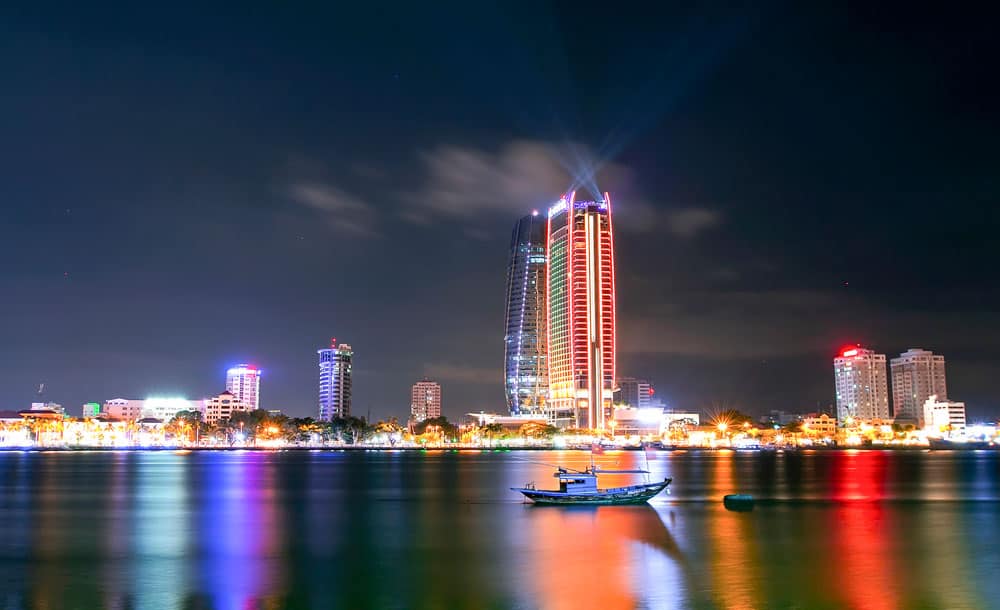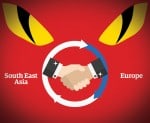Warm ties with the US pave the way for growth but infrastructure issues pose problems in Vietnam, writes Mark Godfrey.
In the never-ending scramble for lower manufacturing wages in Asia, one country has been doing particularly well: Vietnam. The country has had an enormous population surge since the Vietnamese War, which allows it to offer wages much lower than China’s – as well as an emerging consumer market.
Its ever-warmer ties with the US has ensured it’s included in America’s proposed Trans Pacific Partnership, which if passed by the US Congress will give Vietnam preferential access to the US market – at the expense of China, which hasn’t been invited to join the pact.
Much smaller than its giant northern neighbour (and one-time ruler), Vietnam is already replacing China in labour-intensive industries like the production and processing of food and seafood for western markets. But Vietnam has been experiencing serious growing pains. Apart from a drought that wracked the bread-basket and fishing hub that is the Mekong Delta this year, there’s also a continued problem with infrastructure.
Much smaller than its giant northern neighbour, Vietnam is already replacing China in labour-intensive industries like the production and processing of food and seafood for western markets
That’s according to the Japan External Trade Organisation (JETRO) representative to Vietnam, Atsusuke Kawada, speaking in Hanoi. He says that poor infrastructure and cold chain logistics are both turn-offs to would-be Japanese investors who are otherwise keen to invest in Vietnam, attracted to the Mekong’s fertile land and water sources for rice and shrimp production. As someone who’s recently traversed the region’s roads, I’d concur with Kawada’s views on infrastructure.
But Vietnam has a bigger problem that’s harder to fix than building roads. Some of Vietnam’s challenges are remarkably similar to those that China has faced in recent years. Land is key. Japanese firms have also found it very difficult to get sufficient supplies of land due to burdensome bureaucracy that makes it hard to line up sufficient land supplies for a viable agriculture/aquaculture or processing project.
Land ownership in Vietnam is, like China, subject to the control of the state, which grants land usage rights. Unsurprisingly, only USD$64 million of USD$12.9 billion in foreign direct investment booked by Vietnam into 2,000 projects in the first half of 2016 went into agriculture and fisheries.
LAND AND COMMUNICATION
Reform of its land transfer system is a major bottleneck for China – Communist Party elders are split on land reform – but the country has had no such problem with infrastructure. The highway network and railway linkages in key Chinese agriculture and manufacturing provinces like Fujian, Guangdong and Shandong are comprehensive compared to those of Vietnam, and it’s interlinked with major ports that allow for cost-efficient shipment.
Aside from land reform, the other big weakness that China and its neighbour Vietnam share is the comparative lack of a real voice for industry or reliable information networks. And that’s a result of the political system the two neighbours share: industry bodies in Chinese and Vietnamese business are government-funded and supervised, and as such are not as aggressive or outspoken as they should be in lobbying for reforms. Try reading the business pages of The Vietnam News agency and you’ll understand.
Burdensome bureaucracy makes it hard to line up sufficient land supplies
Its labour costs are cheap compared to China – but that isn’t enough to lure investors. The attractions of Vietnam are obvious given its location (bordering China and the dynamic southeast Asian region), economic growth and the rise of a domestic consumer market. Vietnam’s GDP expanded 5.5% in the second quarter of 2016 according to the country’s statistics office, which also calculates that annual GDP growth has averaged just over 6% from 2000 to 2015.
That suggests a nascent domestic market, while the country is also a member of the Association of Southeast Asian Nations (ASEAN) regional trade bloc – and, as noted, a future member of the trade pact that would give it lower-tariff entry to the US market.
The comparative absence of packaged food brands or domestically produced consumer goods will be obvious to anyone who’s visited supermarkets and convenience stores in major cities like Hanoi and Ho Chi Minh. Hence the opportunity for major trading partners like Japan – and the US, which is Vietnam’s biggest export market. The latter has plenty of brands and retail experience that it would like to expand in Vietnam, with an economy growing at an average 5% per year for the past three years.
Wage growth in Vietnam will invariably drive demand for food products, but infrastructure deficits limit this potential. Vietnam has become a hotbed for manufacturing investment, especially in lower-margin processing, but it doesn’t appear to be the place to go if you’re producing perishable goods for export and for domestic sales.
Vietnam’s GDP expanded 5.5% in the second quarter of 2016
However, despite its infrastructure gap and land transfer problems, Vietnam has fundamental demographic advantages on its side that may, over the long run, enable it to overcome issues like logistics. Vietnam’s population – which trebled since the 1960s to 91 million today – is young, and as such insulates the country from the demographic challenge that’s seeing China ageing rapidly, straining its supply of labour and pushing up wages.
The median age in Vietnam is just over 29 years. The country’s average monthly wage is USD$170, which is less than half the equivalent in China. Meanwhile, Vietnam’s middle class is the fastest growing in southeast Asia, and is projected to reach 33 million by 2020, according to several investment banks that look at the region’s consumer prospects.
There is certainly scope there for Vietnam to foster the kind of long-term prosperity the country needs to fix its obvious infrastructure problems.







